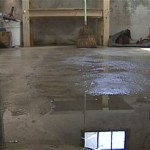Flex Seal For Basement Walls: A Comprehensive Guide
Water seepage in basement walls is a common problem that can lead to serious structural damage if left unattended. Flex Seal, a popular liquid rubber sealant, has emerged as an effective solution for waterproofing basement walls and preventing leaks.
In this article, we will delve into the essential aspects of using Flex Seal on basement walls, including preparation, application techniques, and the benefits and limitations of this versatile sealant.
Advantages of Flex Seal for Basement Walls
- Waterproof barrier: Flex Seal creates a seamless, waterproof barrier that prevents water penetration, protecting your basement from leaks.
- Versatile application: Flex Seal can be applied to various surfaces, including concrete, masonry, metal, and wood, making it suitable for different types of basement walls.
- Durable and long-lasting: Once applied, Flex Seal forms a tough, flexible coating that withstands cracking, peeling, and weathering, providing long-term protection.
- Easy to use: Flex Seal comes in a spray or brush-on form, making it easy to apply even in hard-to-reach areas.
Limitations of Flex Seal for Basement Walls
- Not a permanent solution: While Flex Seal provides effective waterproofing, it may require reapplication over time to maintain its effectiveness.
- May not solve underlying moisture problems: Flex Seal addresses water seepage from the exterior, but it cannot fix moisture issues caused by interior condensation or other structural problems.
- May not adhere to all surfaces: Flex Seal is not suitable for all types of surfaces. It is crucial to ensure proper surface preparation and compatibility before applying it.
Surface Preparation for Flex Seal
Proper surface preparation is essential to ensure the effectiveness and longevity of Flex Seal. Before applying Flex Seal to basement walls, follow these steps:
- Clean and dry the surface: Remove all dirt, debris, and mold from the walls using a pressure washer or scrub brush. Allow the surface to dry completely before proceeding.
- Repair any cracks or holes: Patch or fill any cracks or holes in the walls using a suitable sealant or patching compound.
- Remove loose paint or coating: If the walls have existing paint or coating that is loose or peeling, remove it using a scraper or wire brush.
- Prime the surface (optional): Applying a concrete primer can help enhance the adhesion of Flex Seal to the surface.
Applying Flex Seal to Basement Walls
Once the surface is properly prepared, you can apply Flex Seal to the basement walls. Follow these instructions:
- Shake or stir Flex Seal thoroughly: Ensure the Flex Seal is mixed evenly before use.
- Apply a thick, even coat: Using a sprayer or brush, apply a thick, even coat of Flex Seal to the surface. Pay close attention to cracks, holes, and joints.
- Allow it to dry: Let the Flex Seal dry for 24-48 hours before exposing it to moisture. Ensure proper ventilation during the drying process.
Conclusion
Flex Seal is a versatile and effective waterproofing solution for basement walls. By understanding its advantages, limitations, and proper application techniques, you can successfully protect your basement from water damage and ensure its structural integrity.
Remember, if you encounter any difficulties or have specific concerns regarding your basement waterproofing needs, consult a professional contractor for expert advice and assistance.

Flex Seal Liquid For Basement Waterproofing Flexsealproducts Com

How To Waterproof Basement Walls With Flex Seal Products Youtube

How To Waterproof Basement Walls With Flex Seal Liquid Tutorial Youtube

Using Flex Seal Liquid On Concrete Flexsealproducts Com

How To Apply Flex Seal Liquid Basement Walls 5 Easy Steps

Flex Seal Family Of Products Liquid Black 16 Oz Rubber Sealant Coating Lfsblkr16 The Home

How To Waterproof Basement Walls With Flex Seal Products Youtube

What Does Flex Seal Work On Flexsealproducts Com

Another Flexseal Failure Arlington Ma
Can You Use Flex Seal On Basement Walls Quora








